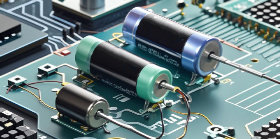Microchip, We're going to sell the factory
On March 20th local time, Microchip announced that it has hired Macquarie Group to be responsible for the marketing and sales of its wafer manufacturing facility (Fab 2) located in Tempe, Arizona. This decision is part of Microchip's previously announced manufacturing restructuring plan, aimed at supporting its strategic goals of improving operational efficiency and profitability.

Don Trent, Senior Managing Direcr of Commodities and Global Markets at Macquarie Group, added, "From equipment remarketing to semiconductor wafer fab sales, Macquarie provides asset oriented solutions that are crucial to its semiconductor manufacturing business. Macquarie has completed over 50 wafer fab disposal projects and is pleased that Microchip has commissioned us to assist with the sale of its wafer fab in Tempe.
The Fab 2 factory includes installed and operational semiconductor equipment, which will be marketed and sold under the guidance of the semiconductor and technology teams from Macquarie Commodities and Global Markets business units. Microchip's product manufacturing and technology at Fab 2 will be transferred to Fab 4 and Fab 5 factories in Oregon and Colorado, respectively. These facilities remain key to Microchip's long-term production and capacity plans.
Microchip has been taking frequent actions against wafer fabs recently.
In December of last year, Microchip announced the closure of Fab 2. Fab 2 produces 8-inch wafers (200 mm) with a production capacity of 1 μ m-250nm process, with a capacity of 20000 wafers per month. At the time, Microchip stated that Fab 2 was expected to close in September 2025, saving approximately $90 million annually starting from 2026.
But in March of this year, Microchip announced layoffs at Fab 4, Fab 5, and its backend manufacturing plant in the Philippines, which had taken over Fab 2 production capacity. The plan is to lay off about 2000 employees, accounting for approximately 9% of the global workforce.
In addition, the closure of Fab 2 will be advanced from September 2025 to May.
Through this operation, Microchip expects to save approximately $90 million to $100 million in operating costs annually.
Behind the closure and sale of factories is Microchip's continued weak performance for over a year.
According to Microchip's latest financial report, for the third quarter of the fiscal year 2025 ending December 31, 2024, revenue plummeted 41.9% year-on-year and decreased 11.8% month on month to $1.026 billion. The gross profit margin was 54.7%, a significant decrease from 63.4% in the same period last year.
Looking at it from a long-term perspective, based on the fiscal year, the revenue for the entire 2024 fiscal year (from April 1, 2023 to March 31, 2024) was $7.634 billion, a decrease of 9.5%. And currently, the total revenue for the three quarters (ending December 31, 2024) disclosed in the fiscal year 2025 is $3.431 billion, far lower than the total of $6.308 billion in the same period last year. The performance for this fiscal year is likely to be even worse.

Another reason is the high inventory that cannot be removed.
As of December 31, 2024, Microchip's overall inventory level was $1.36 billion, with little change compared to the beginning of the year. And due to the decrease in net sales, the inventory days have increased significantly. As of December 31, 2024, the inventory days on the balance sheet were 266 days, while the inventory days in the first quarter of this fiscal year were 224 days.
According to Stocktitan's analysis, a 266 day inventory level is equivalent to nearly 9 months of inventory, far exceeding the industry standard of 70-90 days.
Microchip has been trying to find ways to reduce inventory, such as canceling some long-term agreements with contract manufacturers. However, in the context of overall weak demand, no significant improvement has been seen yet.
Related Information

- 2025.05.12 Intel terminates Deep Link program



